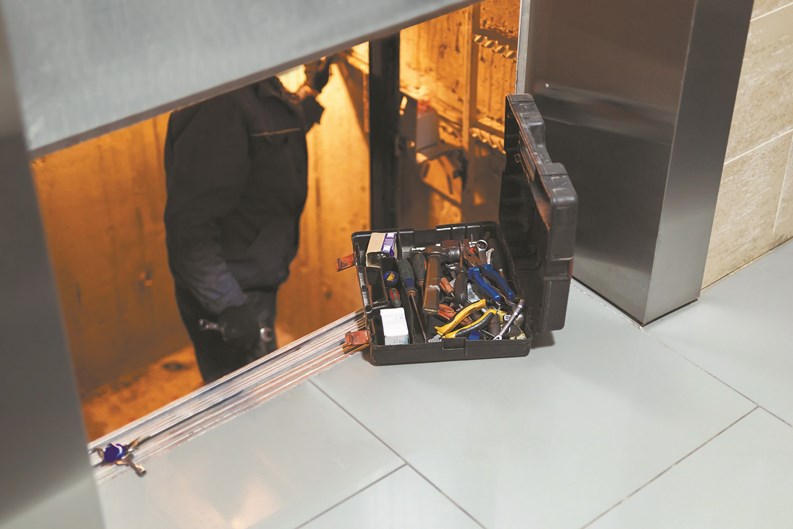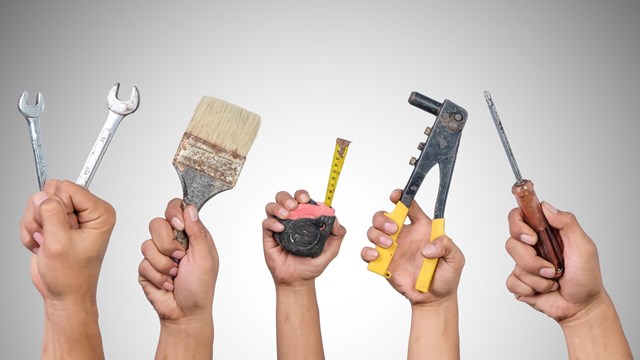The invention and adaptation of vertical transportation – otherwise known as the elevator – in the 1850s changed the face of architecture, space design, and apartment living forever. Unfortunately, like any mechanical system, every so often elevators must undergo a major repair, refurbishment or replacement. If you live on the first, second, third, or even the fourth floor, that’s an inconvenience, but perhaps not a life-changing event. If you live on the 20th floor, or live with a disability...well that’s a different story.
Elevator Components and Their Maintenance
According to the pros, it’s not the entire system or even the elevator cab that will necessarily need replacement or refurbishment. “You replace the components,” says Jacquelyn Duggan, an account executive with Gumley Haft Property Management in New York City. You might have to replace the cables, the control board, or upgrade other mechanisms, she explains.
“Any modification to an existing system is characterized as a modernization, which can be partial or full. A job is considered new construction when new rails are added to an existing job, or it is installed from the ground up,” explains John Miller, Director of Operations for the Liberty Elevator Corporation in Paterson, New Jersey. He added that hydraulic elevators typically last between 25 to 30 years. Traction applications, he noted, have controllers that last 25 to 30 years as well, although the machinery may last even longer. The lifespan of elevator ropes are typically 10 to 15 years.
“If you’re adding an elevator to an existing building, this would be considered new construction, otherwise you can replace all elements of an elevator, besides the rails, and it would be considered a full modernization,” says Miller.
Elevators are composed of lots of moving parts. According to the website elevatorsource.com, the component parts of an elevator include the electrical switchgear; wiring; controller/dispatcher; cab interior; machinery; shaft doors and shaftway; hoist rails; cables; hydraulic pistons; call stations; and operating panels. These components have useful lives ranging from 15 years for an elevator cab interior to 50-plus years for elevator switchgear. Most of the components have useful lives of between 20 and 25 years.
“Twenty years is the rough approximation for the life of elevator mechanicals, though there are many variables,” says Eveline Smythe, an executive manager with AKAM On-Site, the managing agent for The Tides condominium community in Hollywood, Florida. “Any time you do any kind of significant upgrade – like a mechanical upgrade – you may not be doing an entire modernization, which requires upgrading the cables, and a whole lot of other things. But, if you do a portion of the work at a time, it can significantly increase the life of the machinery overall. Alternatively, if you haven’t touched the elevator machinery at all, the useful life is about 20 years.”
In many buildings, particularly older ones, the cab interiors often reflect the specific design and architectural styles of the time when the building was built. Some may look like a ‘lift’ out of the early 20th century, evoking scenes set in Paris or London. Others developed in the Art Deco period of the 1930s are reminiscent of classic old Hollywood films. Still others recall the post-modern period of the 1950s and 1960s with their sleek lines and clean, metallic form. For many residents and board members, this unique statement about their building may be the single item they most want to retain and maintain. “Often cabs are artistically relevant,” says Duggan, “and residents want to keep them.” Retaining that look may add another dimension to an elevator project, requiring a designer to restore the cab to its former aesthetic glory.
Elevator Consultants
As is the case with pretty much everything, there’s a consultant available to help you with your elevator project. “Elevator consultants specialize in everything about elevators,” says Gayle Goodman, Director of Communications at Gumley Haft Property Management. “They are more than contractors and can determine modifications and improvements.”
Joseph Caracappa is an elevator consultant with Sierra Consulting Group, a large elevator consulting firm based in Long Island, New York. “An elevator consultant represents the building owner in an elevator modernization project,” he says. “We prepare the scope of the work, so that several elevator companies can provide price bids for the project. Instead of the owner calling five different companies to get bids which are usually all over the place, we put together the RFP, request for proposal and get the quotes for the owner.”
Big Versus Small
“Single-elevator buildings are a challenge,” says Caracappa. “The question is how do you get the people up and down for six to eight weeks while the work is being done and completed. It’s usually walking up and down. When the elevator is out, it’s out. It can’t be used temporarily. Multi-elevator buildings are easy. You always have another car, a freight car or the other passenger elevator. But a single elevator, well, no one can use the elevator during the process and it must be tested by the city before it can be put back into operation.”
Located in the New York City borough of Manhattan, Duggan’s seven-story building was constructed at the turnof the 20th century. The single elevator required modernization and refurbishing. “The board really had to think a lot about the project and about this problem,” Duggan says. “We had people in the building, one family in particular, where someone was disabled and in a wheelchair. There was no way this resident could go up and down the stairs. Another resident had two very large dogs, and they couldn’t go up and down numerous times a day, either. There was no way we could accommodate them. In the end, the board did arrange to do the work during the summer months when many people were away on vacation. The resident with the dogs had a summer home and went there for the duration of the project. The disabled resident stayed with a family member elsewhere. For other residents who were able to go up and down the stairs, we accommodated them by hiring extra staff. The extra staff helped people with their groceries, luggage, etc. We placed chairs on each landing and provided cold bottles of water for anyone who was tired or overheated.”
The logistics employed for an elevator project at The Tides, two 15-story buildings located on the beach in Hollywood, Florida, were completely different, explains Smythe. “Communications is the key,” she says. “Many of our owners are internationally based, in South America and Canada. Much of our communications were done through email blasts. The first thing we did was discuss the project with the residents at several meetings. Then we set up communications by email with notice as to how the project would progress. We let people prepare for the project.”
Since each building has multiple elevators, at no time was anyone stranded. They did make some changes to regular procedures, though. “When we did the service elevators we had to halt all move-ins and move-outs and all major deliveries. You could still have small packages or food delivered,” says Smythe. “We had a security officer in each lobby to facilitate the efficient use of the remaining elevators. We did a lot of that kind of logistical planning.”
Cost and Project Time
The cost of an elevator project depends on many factors, including what exactly is being done and how many stories the building has. “For a six- to eight-story, single-elevator building,” says Caracappa, “the cost should run about $150,000 to $175,000. In a multi-elevator building with more stories, the cost could run up to $250,000 per cab.” Commensurately, in a high-rise building, say of between 15 and 20 stories with four elevators, a full refurbishment and replacement job could tally over $1 million.
Miller adds that it can be difficult to speculate on costs because there are so many variables. “Depending on the building usage, rise, equipment, cab finishes, etc., the price can vary dramatically. Many times, an elevator consultant is hired to perform a comprehensive survey of the building and determine what extent of a modernization is needed,” he says. “For new installations, the architects, engineers, consultants, and elevator company collaborate to determine the best application for a building’s needs and budget.”
Estimates for completion range anywhere from six to 10 weeks, with most falling into the 10-week period. Projects can, however, be completed more quickly. Duggan relates that the elevator project at the building mentioned above on the east side of Manhattan was completed in five weeks and two days. The board chose to incur overtime costs to get the project done quickly.
Duggan also says that the contract the building signs with the company that will do the work will contain a clause specifying a timeline and completion date. If that timeline and date are not met, the contract will contain penalties. “We had a performance clause in our contract,” says Smythe. “They’ve gotten pretty close to it.” The project at the Tides is still underway and is expected to be completed within a few more months.
Replacing or repairing elevators is a major project for any condominium or co-op community, whether the property is six stories or 60. Regardless, at some point that work will have to be done. Finding a competent elevator consultant is a critical and important first step. Keeping residents informed and involved is a necessary ingredient. The more the residents know and the more they feel their needs are being met, the easier the project will go for everyone. When we live in a community we are a part of a bigger family. As Duggan says, “It’s a family building, and everyone really cooperated.”
A J Sidransky is a staff writer/reporter with The New Jersey Cooperator, and a published novelist.







Leave a Comment